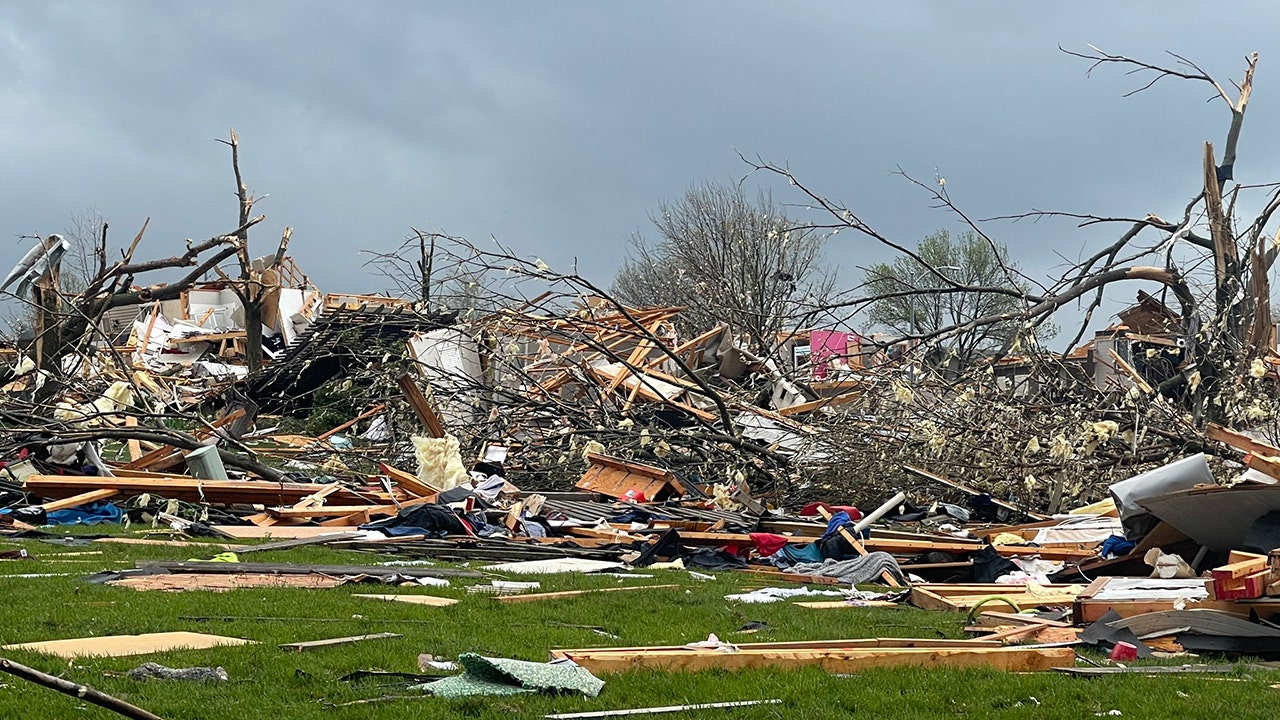A reverberating hum in the air, a great rush of wind, a hot, sulfuric smell.
Such was the whirl of sensations that accompanied a meteorite when it landed in Baldwyn, Miss. in 1922, striking the earth just feet from where a Black tenant farmer named Ed Bush was standing. The rock had alighted on farmland owned by Bush’s landlord, a white judge named Allen Cox. Seven years later, an entry on the meteorite was written up in a scientific volume called “Minerals From Earth and Sky,” where Cox is named but Bush, anonymized, is described merely as a “negro tenant who was badly frightened” by the event.
Lorna Simpson encountered this book several years ago and has since remained curious about the stuff-of-legends yet little-known story of Bush’s cosmic encounter. Her show at Hauser & Wirth in Chelsea is a body of work made in response to this bewildering kernel of human-and-galactic history.
Simpson meets the daunting beauty of the celestial sphere with a painterly language of stellar silvers and penumbral grays. At the heart of it she wrestles with a question: How do the hard, constraining realities of Earth — such as the historical obscuring of figures like Ed Bush — face the grand magnitude of that which lies beyond it?
The exhibition, titled “Earth & Sky” (a nod to the geology book), navigates between the temporal and the otherworldly in two series of paintings and a multipart sculptural work. In the first gallery is “Unnatural Constellation,” a set of paintings by Simpson based on a 1960s Ebony magazine spread on gun violence in America. The second gallery features paintings based on depictions of meteorites, including the one that fell at Bush’s feet. Together, they weave a dialogue on force — the forces of gravity and of violence, of the cosmic and the lethal.
Simpson, who started painting only about 10 years ago, after wide acclaim during her decades making photo-text works, enters ambitious formal terrain here, reaching new and formidable heights of abstraction. She has flirted with the edge of the abstract before, in landscape paintings like those from “Darkening,” her first solo show at Hauser & Wirth in New York, in 2019.
In “Earth & Sky,” the paintings churn with an amplified density and thrilling ambiguity that feels closer than ever to the nonrepresentational. It’s a fitting turn for paintings that emerge from meditations on outer space.
In two paintings titled “Unnatural Constellation,” screenprinted images of bullet holes are exposed under silver paint. The bullet holes, abstracted into a shape that evokes a map of the stars, are somewhat elusive: At first, I did’t realize what I was looking at. But this subterfuge is perhaps the very substance of the paintings. The works trick the eye into seeing the places where beauty becomes enfolded with violence, where the gleam of the universe is inflected with gore.
Nearby, a multimedia work titled “Earth & Sky (unknown fall)” harks back to Simpson’s explorations in text-based work. In two adjacent wall sculptures made from resin lettering, she presents the textbook entry on the Baldwyn meteorite and then recasts it by redacting words. The result is a sort of fragmented found poem in which charged words from the text, like “frightened,” “attracted” and “struck,” are isolated in negative space. After reading Simpson’s version of it, the original story ripples with subtle currents of feeling. An actual meteorite sits on the floor below the wall sculptures, as if the story from Baldwyn is coming to life before our eyes.
Exuding a serene drama, Simpson’s paintings of meteorites are the most gripping part of the exhibition. The artist begins these with a surface of gesso-coated fiberglass, onto which she screenprints images of meteorites from various catalogs and archives. Finally, she adds layers of acrylic wash that accumulate on the surface, forming an iridescent atmospheric haze. Veiled by this aqueous spillage — textured by the rough grain of the silk-screening process — the meteorites in the paintings seem not entirely solid. Rather, they appear to be floating or falling through liquidity, softened by buoyancy.
The paintings can set one adrift to wander in the breadth of geologic time — unmoored from the present. But Simpson sounds alarms that bring us back to earth. For example, two paintings carry a 26-line title telling the story of the Cape York meteorite, fragments of which were taken from where it landed in Greenland, where it was a vital source of iron for Indigenous communities; several were placed in the American Museum of Natural History. In 1897, the American explorer Robert Peary coaxed six Inuit people to travel from Greenland to New York with him, four of whom soon fell ill and died.
With this history of colonial expropriation in view, the violence of the paintings in “Unnatural Constellation” begins to ring more clearly. The ethereal matters that swim within Simpson’s paintings stand outside of time while simultaneously returning us to it, shocking us with the monumental force implied by the object falling from the sky.
Lorna Simpson: Earth & Sky
Through Jan. 11. Hauser & Wirth, 542 West 22nd Street; 212-790-3900, hauserwirth.com.






